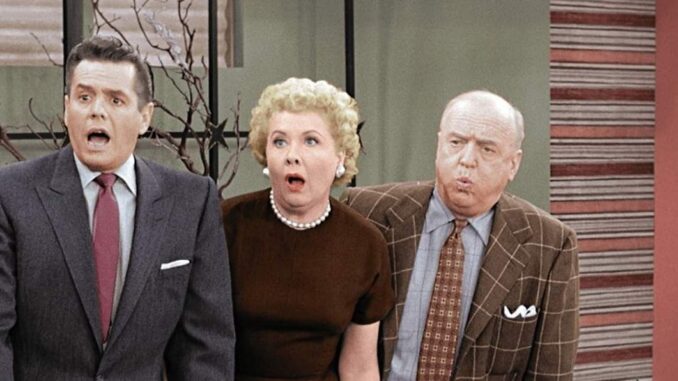
📰 Behind the Scenes of I Love Lucy: The Story of Lucille Ball and Desi Arnaz’s Groundbreaking Partnership
Los Angeles, July 2025 — While I Love Lucy is celebrated for its humor and iconic characters, the story behind the camera is just as fascinating. The partnership of Lucille Ball and Desi Arnaz transformed television production and shaped Hollywood history.
🤝 A Marriage Made for Television
Lucille Ball and Desi Arnaz met in the 1940s, and their real-life romance translated perfectly to the screen. Their personal chemistry was undeniable, and CBS executives saw their potential to star in a sitcom together. Despite initial network skepticism, the couple insisted on casting Desi Arnaz as Ricky Ricardo, breaking conventions by featuring a mixed-ethnicity couple.
🎥 Innovation in Production
Facing challenges in how to produce the show, Ball and Arnaz pioneered the use of the three-camera technique, which involved filming in front of a live audience on sets designed like theater stages. This not only enhanced the performances but also captured authentic laughter and reactions, adding to the show’s charm.
🏢 The Birth of Desilu Studios
To maintain creative control, Ball and Arnaz co-founded Desilu Productions, which produced I Love Lucy. This was revolutionary at the time, as it gave actors a stake in production—especially a woman like Ball, who became one of the first female executives in Hollywood.
Desilu later became a television powerhouse, producing landmark shows that shaped the industry for decades.
🎭 Challenges and Triumphs
Behind the laughs, Ball and Arnaz faced personal and professional challenges, including balancing work with family life and navigating their public personas. Despite their eventual divorce, their collaboration left an indelible mark on entertainment.
📺 Legacy of a Legendary Partnership
Their groundbreaking approach to storytelling, production, and representation paved the way for modern television. The story of I Love Lucy is as much about innovation and courage as it is about comedy, reminding audiences that great art often comes from taking risks.
